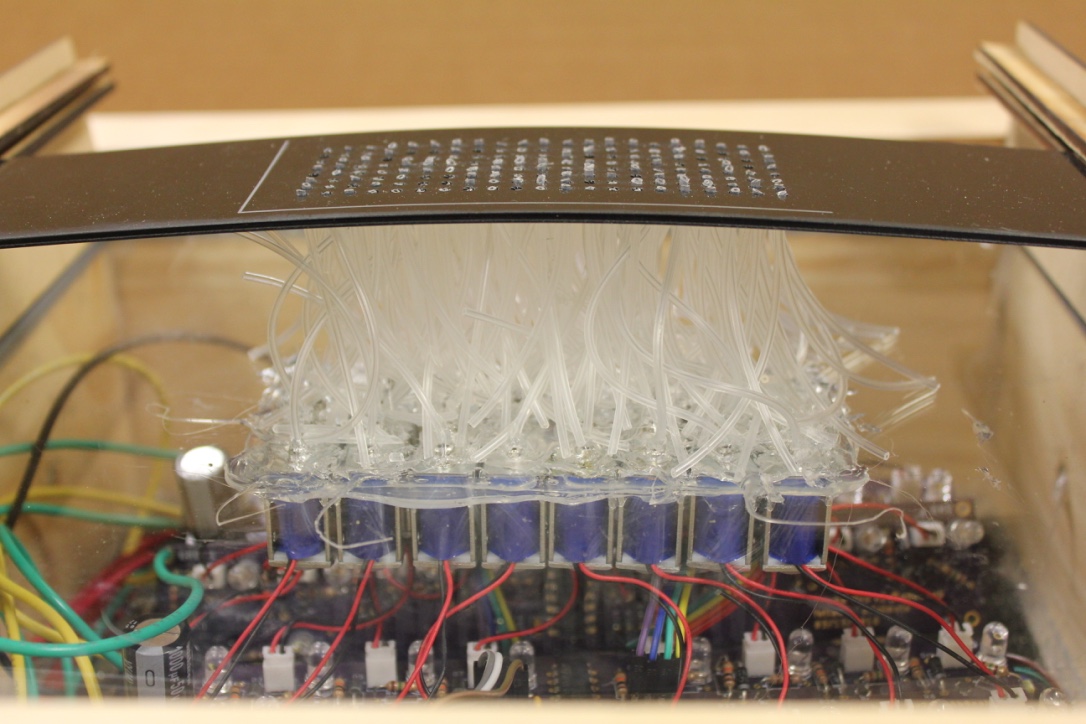Towards a Large-Scale Dynamic Air-Jet-Based Haptic Display
Future Everyday Technology Lab, RIT, NY
Collaborators: Sangram Pawar, Tanmay Songade and Eve Hoggan.
Supervised by: Prof. Daniel Ashbrook
Motivation
Our vision is a display that can be used to display information in multiple modalities; for example a static map might be augmented with air jets to dynamically indicate population growth over time. Such a display should be large enough to support multiple simultaneous users, have a high-enough resolution to form continuous shapes and lines, and be able to be mixed with other modalities such as projected imagery.

How we built it
A group of HCI students and I collaborated to run studies on human perceptual capabilities when interacting with air jets. Through these studies we were able to determine the two-point discrimination threshold for jet proximity and the just noticeable difference threshold for groups of jets. At the same time we were creating/iterating the prototype based on the of outcomes of the studies. Our results offer design guidelines for future air-jet-based haptic displays. In this research I contributed by constructing a working prototype of the air jet display with an array of 32 computer-controlled air valves. Then, I designed and conducted experiments to evaluate and study the user ability to understand graphics displayed with and without pulsation of air jets using the final prototype of the display that I constructed. I designed procedure for users studies, wrote the questionnaire, and interviewed the 20 participants about their experiences.
How it works
I built the display using an array of 32 computer-controlled air valves. Each valve protrudes through a sheet of acrylic secured in the box. As the valves are approximately 10x12 mm in profile—far larger than our optimal 4.3 mm spacing—I run a 6 cm tube from each valve to a second acrylic sheet with laser-cut holes spaced 4.3 mm apart.

The tubes have an inner diameter of 0.51 mm and an outer diameter of 1.52 mm, and fit securely within the opening of the valves. The valves are controlled via shift registers connected to an Arduino, in turn connected to a computer.
Prototype Evaluation
Although consisting of only 32 vales, our prototype enablesus to validate our study findings with an application test, as well as to add dynamics to the display. Our evaluation is intended as a proof-of-concept of our system, to illustrate that in operation it can be used to display simple graphics, and to determine whether its ability to dynamically vary its output can lead to improved user perception.